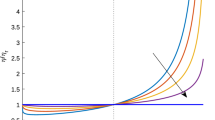Abstract
We propose a mathematical model of infection spreading among the adult population of certain region. The model is constructed on the basis of some delay differential equations that are supplemented with integral equations of convolution type and the initial data. The variables included in the integral equations and the delay variables take into account the number of individuals in different groups and the transition rate of individuals between the groups which reflects the stages of the disease. Some properties of the solutions of the model are under study including the existence, uniqueness, and nonnegativity of the solution components on the half-axis, as well as the presence and stability of the equilibrium states. We formulate and solve the problem of eliminating infection during finite time. The time for infection eradication is estimated on using the exponentially decreasing component-by-component estimates of the solution. Also we present the results of computational experiments on estimating the eradication time and evaluating the effectiveness of the process of diagnosis and identification of sick (infected) individuals through the procedure of regular medical examinations.

Similar content being viewed by others
REFERENCES
H. Hethcote, “The Mathematics of Infectious Diseases,” SIAM Rev.42, 599–653 (2000).
S. A. Gourley and Y. Kuang, “A Stage-Structured Predator-Prey Model and Its Dependence on Maturation Delay and Death Rate,” J. Math. Biol. 49, 188–200 (2004).
G. Huang and Y. Takeuchi, “Global Analysis on Delay Epidemiological Dynamic Models with Nonlinear Incidence,” J. Math. Biol. No. 63, 125–139 (2011).
K. A. Pawelek, S. Liu, F. Pahlevani, and L. Rong, “A Model of HIV-1 Infection with Two Time Delays: Mathematical Analysis and Comparison with Patient Data,” Math. Biosci. 235 (1), 98–109 (2012).
N. V. Pertsev, B. Yu. Pichugin, and A. N. Pichugina, “Studying the Asymptotic Behavior of Solutions to Some Models of Epidemic Processes,” Mat. Biol. Bioinform.8 (1), 21–48 (2013).
Y. Yuan and J. Belair, “Threshold Dynamics in an SEIRS Model with Latency and Temporary Immunity,” J. Math. Biol. 69, 875–904 (2014).
M. V. Barbarossa and G. Rost, “Immuno-Epidemiology of a Population Structured by Immune Status: A Mathematical Study of Waning Immunity and Immune System Boosting,” J. Math. Biol. No. 71, 1737–1770 (2015).
D. Okuonghae, “A Note on Some Qualitative Properties of a Tuberculosis Differential Equation Model with a Time Delay,” Differ. Equations. Dynam. Syst. 23 (2), 181–194 (2015).
G. Fan, H. R. Thieme, and H. Zhu, “Delay Differential Systems for Tick Population Dynamics,” J. Math. Biol. 71, 1071–1048 (2015).
N. V. Pertsev, “On Correctness Conditions for Integral Models of Some Living Systems,” Differentsial’nye Uravneniya 53 (9), 1162–1179 (2017).
R. M. Anderson and R. M. May, Infectious Diseases of Humans: Dynamics and Control (Oxford University Press, Oxford, 1991; Mir, Moscow, 2004).
M. I. Perelman, G. I. Marchuk, S. E. Borisov, B. Ya. Kazennykh, K. K. Avilov, A. S. Karkach, and A. A. Romanyukha, “Tuberculosis Epidemiology in Russia: The Mathematical Model and Data Analysis,” Russ. J. Numer. Anal. Math. Modelling 19 (4), 305–314 (2004).
K. K. Avilov, A. A. Romanyukha, E. M. Belilovskii, and S. E. Borisov, “Comparison of Schemes of Modeling the Natural Clinical Course of Pulmonary Tuberculosis,” Mat. Biol. Bioinform. 14 (2), 570–587 (2019).
E. A. Nosova, “Models of Control and Propagation of HIV Infection,” Mat. Biol. Bioinform. 7 (2), 632–675 (2012).
L. E. El’sgol’ts and S. B. Norkin (Eds.), Introduction to the Theory of Differential Equations with Deviation Argument (Academic Press, New York and London, 1973).
V. B. Kolmanovskii and V. R. Nosov, Stability and Periodic Regimes of Systems with Delay (Nauka, Moscow, 1981) [in Russian].
N. V. Pertsev, “On Stability of Solutions to Linear Differential Equations with Delay Appeared in Models of Living Systems,” Mat. Trudy 22 (2), 157–174 (2019).
N. V. Pertsev, “Two-Sided Estimates for Solutions to the Cauchy Problem for Wazevski Linear Differential Systems with Delay,” Sibir. Mat. Zh. 54 (6), 1368–1379 (2013) [Siberian Math. J. 54 (6), 1088–1103 (2013)].
N. V. Pertsev, “Global Solvability and Estimates of Solutions to the Cauchy Problem for the Retarded Functional-Differential Equations That Are Used to Model of Living Systems,” Sibir. Mat. Zh. 59 (1), 143–157 (2018) [Siberian Math. J. 59 (1), 113–125 (2018)].
Funding
N. V. Pertsev and K. K. Loginov were supported by the Russian Foundation for Basic Research (project no. 18–29–10086). V. A. Topchii was supported by the State Task to the Sobolev Institute of Mathematics (project no. 0314–2019–0009).
Author information
Authors and Affiliations
Corresponding authors
Additional information
Translated by L.B. Vertgeim
Rights and permissions
About this article
Cite this article
Pertsev, N.V., Loginov, K.K. & Topchii, V.A. Analysis of an Epidemic Mathematical Model Based on Delay Differential Equations. J. Appl. Ind. Math. 14, 396–406 (2020). https://doi.org/10.1134/S1990478920020167
Received:
Revised:
Accepted:
Published:
Issue Date:
DOI: https://doi.org/10.1134/S1990478920020167




